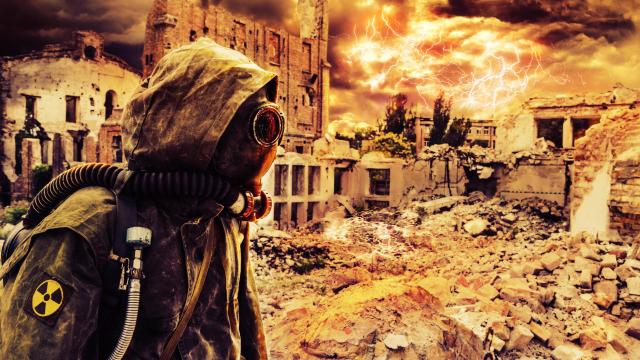A new study provides a reality check about your chances of surviving a nuclear explosion. It suggests that, even if you’re hiding indoors and far away enough to avoid immediate disintegration, the high-speed winds created from the blast could still be enough to kill or seriously injure you. But the findings also indicate the best locations within a building to take shelter, should the worst-case scenario ever occur.
The research comes from scientists from the University of Nicosia in Cyprus. They created a computer model of the impacts of a 750 kiloton-rated warhead detonated above a typical city.
The explosion would vaporise people caught within the initial fireball, which could extend just over half a mile around the bomb. Within 10 seconds, the researchers found, the blast would create a shockwave bubble almost 5 km in radius at ground level. This wave would kick up winds strong enough to kill or maim people unlucky enough to be stuck outside, and it could even knock down some flimsier buildings. Concrete-reinforced buildings would largely remain intact, the team went on to find, but not necessarily everyone inside them would survive.
“Before our study, the danger to people inside a concrete-reinforced building that withstands the blast wave was unclear,” said study author Dimitris Drikakis in a statement from the American Institute of Physics, the journal’s publishers. “Our study shows that high airspeeds remain a considerable hazard and can still result in severe injuries or even fatalities.”
The team’s findings are published in the journal Physics of Fluids.
The tight spaces within these buildings could actually amplify airspeeds, for instance, while the ongoing wave might cause these winds to bounce off walls or bend around corners. Depending on the location and timing, people indoors could still be lifted off the ground and thrown like ragdolls into walls by the air. And of course, the resulting radiation fallout and surrounding structural damage would make post-nuke life no picnic, even if you survived the initial chaos relatively unscathed.
As dire as these findings are, they also suggest that there are some hiding places better than others — provided that you can get to them fast enough once a nuke goes off.

The worst places to hide seem to be in the direct vicinity of the windows, door openings, and hallways, since this is where the air will be most funneled through in the shockwave. But airspeeds are likely to be lowest in the room corners away from these openings along the walls facing the blast, so these areas should be the safest to hide in. The researchers created a model showing where air velocity is likely to be highest inside a building.
“The most dangerous critical indoor locations to avoid are the windows, the corridors, and the doors,” said author Ioannis Kokkinakis. “People should stay away from these locations and immediately take shelter. Even in the front room facing the explosion, one can be safe from the high airspeeds if positioned at the corners of the wall facing the blast.”
For those of you who are wondering, the team did not look at what would happen if you tried to survive a nuclear blast by hiding inside a fridge, a la Indiana Jones, though other scientists have cast doubt on that particular piece of movie logic.
